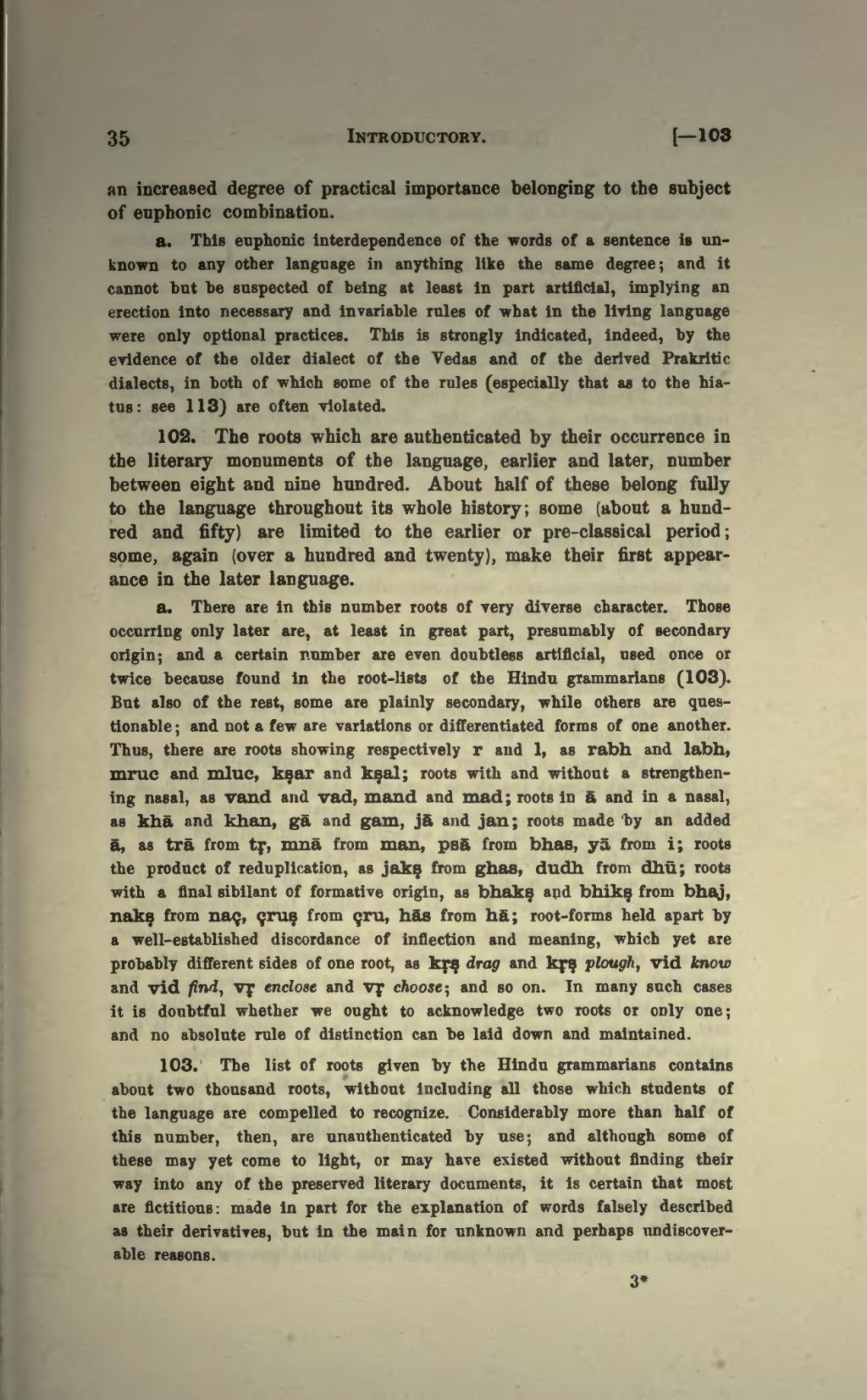an increased degree of practical importance belonging to the subject of euphonic combination.
a. This euphonic interdependence of the words of a sentence is unknown to any other language in anything like the same degree; and it cannot but be suspected of being at least in part artificial, implying an erection into necessary and invariable rules of what in the living language were only optional practices. This is strongly indicated, indeed, by the evidence of the older dialect of the Vedas and of the derived Prakritic dialects, in both of which some of the rules (especially that as to the hiatus: see 113) are often violated.
102. The roots which are authenticated by their occurrence in the literary monuments of the language, earlier and later, number between eight and nine hundred. About half of these belong fully to the language throughout its whole history; some (about a hundred and fifty) are limited to the earlier or pre-classical period; some, again (over a hundred and twenty), make their first appearance in the later language.
a. There are in this number roots of very diverse character. Those occurring only later are, at least in great part, presumably of secondary origin; and a certain number are even doubtless artificial, used once or twice because found in the root-lists of the Hindu grammarians (103). But also of the rest, some are plainly secondary, while others are questionable; and not a few are variations or differentiated forms of one another. Thus, there are roots showing respectively r and l, as rabh and labh, mruc and mluc, kṣar and kṣal; roots with and without a strengthening nasal, as vand and vad, mand and mad; roots in ā and in a nasal, as khā and khan, gā and gam, jā and jan; roots made by an added ā, as trā from tṛ, mnā from man, psā from bhas, yā from i; roots the product of reduplication, as jakṣ from ghas, dudh from dhū; roots with a final sibilant of formative origin, as bhakṣ and bhikṣ from bhaj, nakṣ from naç, çruṣ from çru, hās from hā; root-forms held apart by a well-established discordance of inflection and meaning, which yet are probably different sides of one root, as kṛṣ drag and kṛṣ plough, vid know and vid find, vṛ enclose and vṛ choose; and so on. In many such cases it is doubtful whether we ought to acknowledge two roots or only one; and no absolute rule of distinction can be laid down and maintained.
103. The list of roots given by the Hindu grammarians contains about two thousand roots, without including all those which students of the language are compelled to recognize. Considerably more than half of this number, then, are unauthenticated by use; and although some of these may yet come to light, or may have existed without finding their way into any of the preserved literary documents, it is certain that most are fictitious; made in part for the explanation of words falsely described as their derivatives, but in the main for unknown and perhaps undiscoverable reasons.
